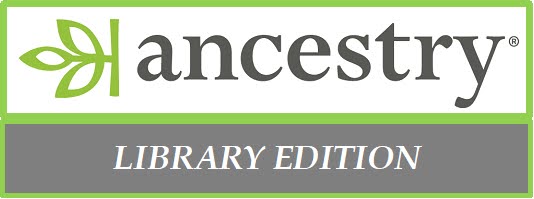Every family tree has relatives who should be in the United States Federal Censuses, but you just can’t seem to find them. Here are three tips for tracking down hard-to-find ancestors.
1. Search multiple databases. Ancestry, FamilySearch, FindMyPast, and HeritageQuest all have census records and those same records are all indexed differently. If you can’t find your relative in one database, try another. This strategy works best when the census enumerator had poor handwriting and/or when the indexer couldn’t read the records. Here’s an example:
In 1870, Lucian C. Sturgess lived in Medina Township, Medina County, Ohio.
FamilySearch and FindMyPast correctly index his surname as Sturgess.
Ancestry and HeritageQuest, on the other hand, index this family’s name as Sturgep, with Sturges added as an alternative. If you only used Ancestry or HeritageQuest, you might not find him!
You can try all four databases through MCDL. At present, you can access Ancestry and HeritageQuest from home with your MCDL library card. FamilySearch is always free. FindMyPast is free to use at Medina Library. Learn more about MCDL databases here.
2. Build a timeline and narrow your geographic focus. If you can limit your search to a state or a county (or even better, a township or city!) will improve your chances of finding your relatives. A good way to do this, is to create a timeline of where your relative was living. Resources that can help include city directories, newspapers, state censuses, and/or vital records. Here’s an example:
George Wirkner, born 1873 in Medina County, Ohio appears in the 1880, 1900, 1910, 1920, and 1940 censuses. But he can’t be found in 1930…
At the time of the 1920 census, he lived in Liverpool Township.
A 1923 newspaper article notes that “Mr. and Mrs. George Wirkner have sold their farm and have bought a home in Medina and expect to move there soon.”
When George’s daughter Irene was married in 1935, she listed her residence as Medina.
At the time of the 1940 census, he lived in the village of Medina.
Based on these additional details, it appears that the Wirkner family left Liverpool Township in 1923. At this time they moved to Medina, where they lived for the next 17+ years. From the timeline, it seems likely that they were in Medina in 1930. By narrowing down our geographic location, now there is a more specific place to look for George Wirkner.
3. Search with given names only, leaving the surname field blank, for as many family members as possible in a single search. This tip works best if you’ve homed in on a specific geographic region to search. In the case of the Wirkner family, building a timeline suggested they would be in Medina village in 1930. From other records I knew that George’s wife was named Mary and they had a daughter named Irene.
 |
| It might seem counterintuitive, but searching with just a first name and a couple of relatives, in a specific location, may help you locate a relative on the census. |
By searching with the context of his family members, this technique ultimately helped me find George. My initial search – with his full name of George Wirkner – failed, because on the 1930 census he was enumerated as George WirkMer. (And one letter made all the difference!)
To get the most out of this tip, consider…
Limit your search to an exact location (a feature that is available in most major databases).
Search for a child of the family, instead of the householder. This strategy is helpful because most databases will allow you to search for an individual and their parents’ names, while only some databases allow you to search for multiple children of an individual simultaneously.
Bonus Tip! Still can’t find who you are searching for? Ask for help! Contact the MCDL Genealogy Team and set up a one-on-one appointment (now available in person and virtually) to have a team member review your research problem and make suggestions. Reach the team at me-team.genealogy@mcdl.info or 330-725-0588 x5017. Learn more about scheduling appointments at https://vwmandmcdl.blogspot.com/2021/06/genealogy-local-history-help.html.






No comments:
Post a Comment